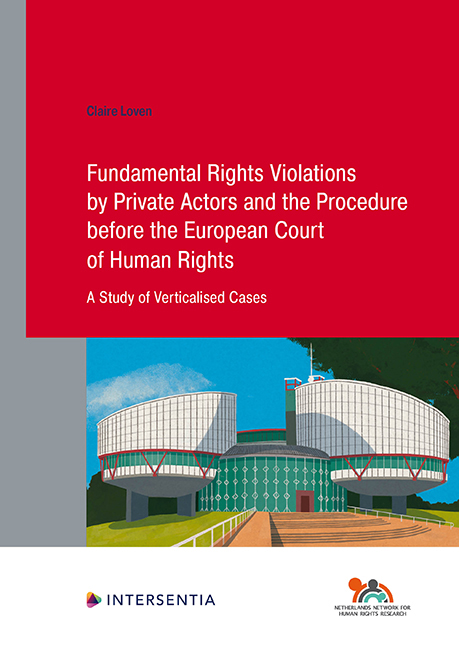 Fundamental Rights Violations by Private Actors and the Procedure before the European Court of Human Rights
Fundamental Rights Violations by Private Actors and the Procedure before the European Court of Human Rights Published online by Cambridge University Press: 29 February 2024
INTRODUCTION
The previous chapter focused on problems arising from the Court's approach to verticalised cases that can manifest themselves during the Court's proceedings. To take the analysis a step further, this chapter focuses on problems that can manifest themselves after the Court's proceedings; that is, during the national follow-up and executing of the Court's judgment in a verticalised case and that can result, for example, in domestic proceedings being reopened. First, the effects of a Court judgment for the disappeared party are discussed. These are examined in some detail, given that the extent to which a third party is affected by a judgment is often considered an important factor in determining whether to involve this party in the proceedings, i.e. whether this party should be heard. Second, attention is paid to the perspectives of Convention States and the Court in relation to possible problems that can manifest themselves after the Court has handed down a judgment in a verticalised case (Section 3).
EFFECTS OF A JUDGMENT FOR THE DISAPPEARED PARTY
When discussing the effects of a Court judgment for the disappeared party, it must be kept in mind that the Court does not issue judgments imposing any legal effects on, or granting rights to, private actors, but instead finds for or against the respondent State. The Court's judgments are, moreover, essentially declaratory in nature. Yet this does not mean that such judgments do not affect the rights and interests of the disappeared party. The effect of a judgment of the Court on the disappeared party may be indirect. In their joint concurring opinion in the case of A.M. and Others, concerning the restriction of parental rights, Judges Ravarani and Elosegui held, for example, that ‘[i]t should not be forgotten that its [the Court’s] judgments can lead to the final deprivation of rights previously acquired by third parties, or at least have serious consequences in practice…’. In his concurring opinion in Bochan (No. 2)701 and A and B702, Judge Wojtyczek also described how the indirect effect of a Court judgment can manifest itself.
To save this book to your Kindle, first ensure no-reply@cambridge.org is added to your Approved Personal Document E-mail List under your Personal Document Settings on the Manage Your Content and Devices page of your Amazon account. Then enter the ‘name’ part of your Kindle email address below. Find out more about saving to your Kindle.
Note you can select to save to either the @free.kindle.com or @kindle.com variations. ‘@free.kindle.com’ emails are free but can only be saved to your device when it is connected to wi-fi. ‘@kindle.com’ emails can be delivered even when you are not connected to wi-fi, but note that service fees apply.
Find out more about the Kindle Personal Document Service.
To save content items to your account, please confirm that you agree to abide by our usage policies. If this is the first time you use this feature, you will be asked to authorise Cambridge Core to connect with your account. Find out more about saving content to Dropbox.
To save content items to your account, please confirm that you agree to abide by our usage policies. If this is the first time you use this feature, you will be asked to authorise Cambridge Core to connect with your account. Find out more about saving content to Google Drive.